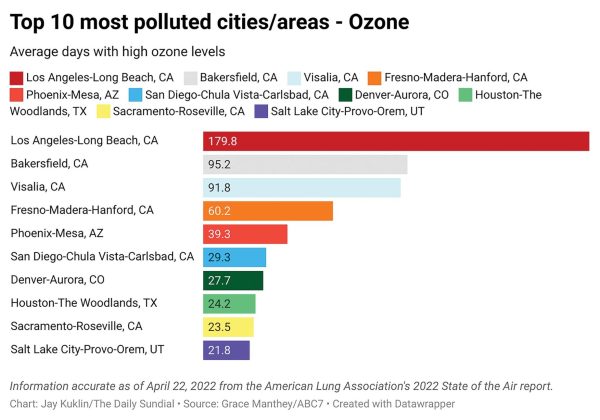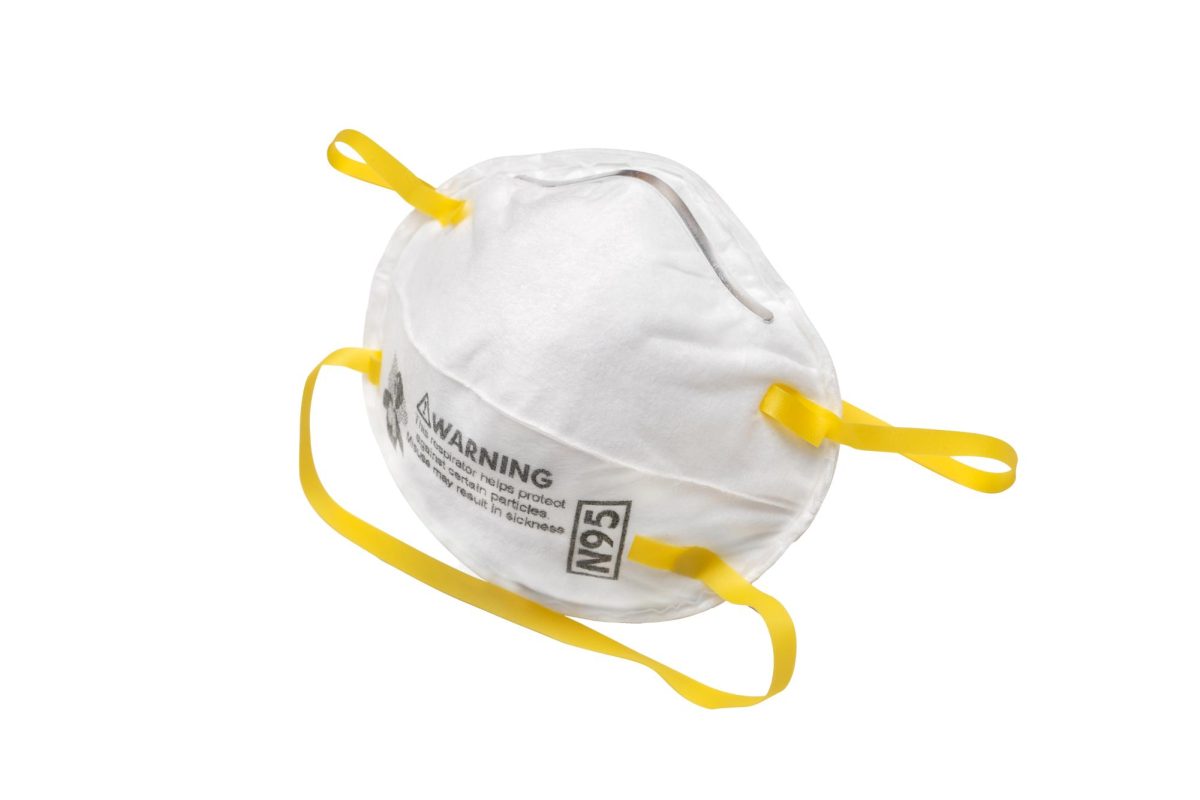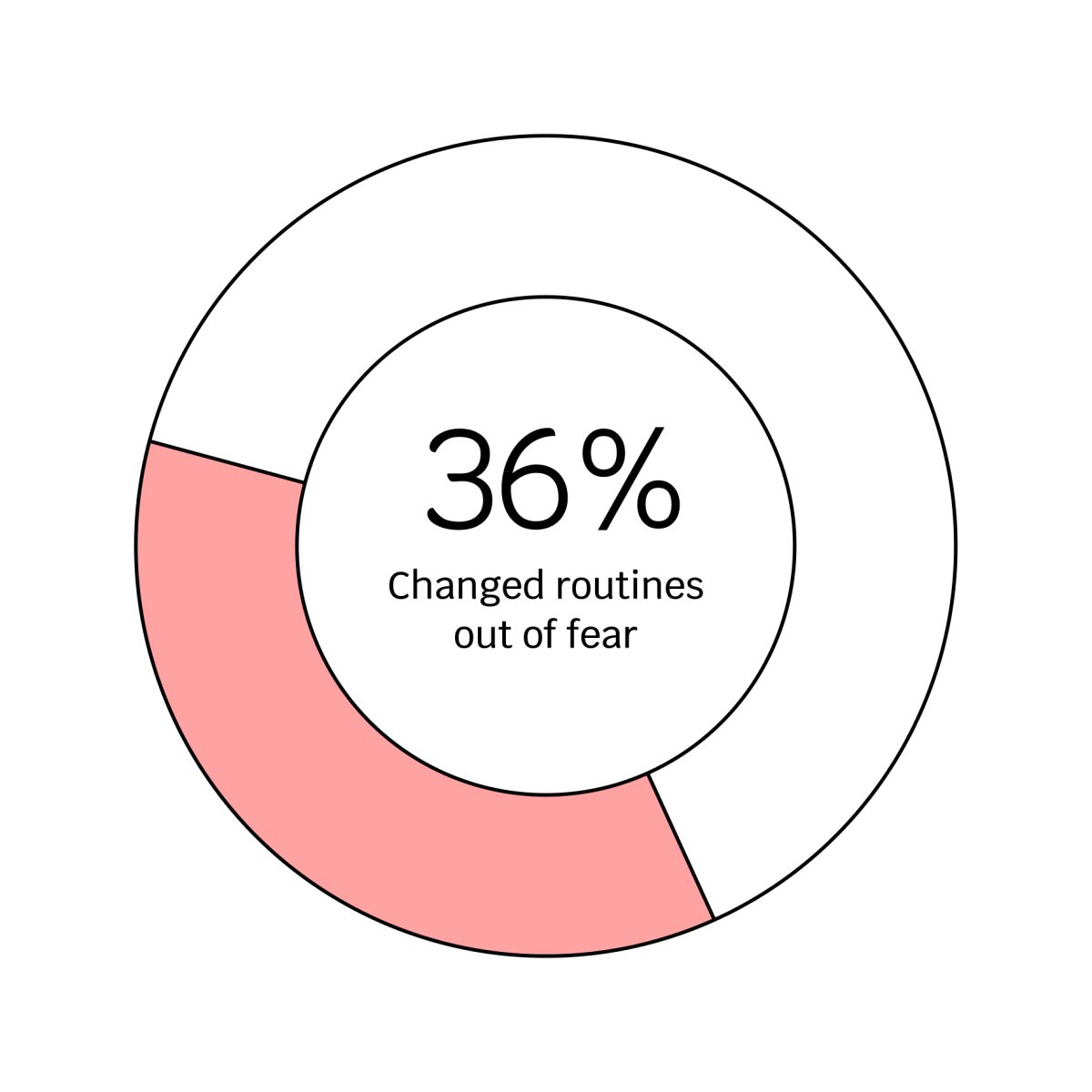
Los Angeles is famous for its beaches and celebrities. Still, a common concern among Angelenos is its notoriety for poor air quality, which goes hand in hand with the city’s subtropical climate.
In two air quality reports provided by the American Lung Association, 40% of Americans live in areas that have unhealthy pollution levels, while LA and other counties in Southern California were given an ‘F’ grade based on particle and ozone pollution.
It also does not help that LA has experienced more climate change in recent years, such as higher temperatures, rising sea levels, alterations in rainfall patterns, and more wildfires.
LA ranks fifth in the top 10 cities with the highest carbon emissions rates, falling short of Seoul, South Korea; Guangzhou, China; New York, and Hong Kong, who rank first, second, third and fourth in the list, according to USNews.com.
However, in March and April 2020, carbon emissions rates decreased by 17% and 34%, respectively, thanks to the city’s response to the COVID-19 pandemic. Washington, D.C., and Baltimore’s carbon emissions rates respectively dropped by 25% and 33% because of a drop in natural gas consumption, a warm spring, and changes in gasoline fuel sales.
The city saw a 20% overall improvement in air quality between March 16, 2020, and April 6, 2020, according to a report from Yifang Zhu, a professor of environmental health sciences at the Fielding School of Public Health at UCLA. The stretch of good air quality was the longest for LA since 1995.
The primary source of LA’s pollution is burning things, such as coal in power plants, gasoline in cars, chemicals in industrial processes, or woody materials and other flammable items during wildfires. Because LA is in a basin area bordered by the Pacific Ocean to the west and several mountain ranges to the east and the south, the city is vulnerable to high ozone levels, often making the air unsafe for residents to breathe. When a city is in a semi-basin, the ozone, or smog, is “trapped” in the air. And when it gets overly sunny during the summer season, and all pollutants from vehicles, factories and other industrial sources become mixed with oceans, windy weather and the terrain from the mountains, the ground-level smog levels get worse.
With that in mind, LA gets an average of 15 inches of rain per year, according to a report by the UCLA Institute of the Environment and Sustainability, contributing to the city’s poor air pollution reports over the past 24 years.
LA’s efforts to reduce pollution are slow. Still, they are paying off, as air quality in the area has improved over the past two decades due to local and state regulations reducing toxic air contaminants, such as the 1990 amendments to the Clean Air Act. The Biden administration approved a new rule reducing air pollution that large ships emit when they are docked among coastline cities, such as LA, San Diego, Long Beach, and Richmond, on Oct. 20.
Citizens can help reduce air pollution by walking or riding a bike instead of driving and turning off all lights in rooms before they leave them. Scheduling all errands into a single trip can help limit personal emissions.
And if Angelenos are looking to buy a new car, they can buy one that is effective with low pollution or opt for a zero-emission vehicle. These are better alternatives than buying a car that relies on gasoline fuel to get around, which burns a lot of fossil fuels and is terrible for the environment.
By taking the necessary steps, citizens can make LA breathable again.


